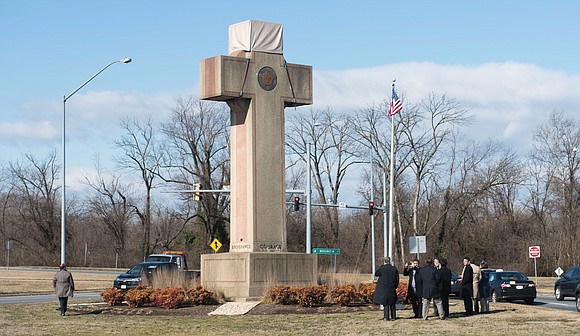U.S. Supreme Court upholds Bladensburg Peace Cross
Free Press wire reports | 6/28/2019, 6 a.m.

WASHINGTON
A 40-foot-tall cross-shaped war memorial standing on public land in Maryland does not represent an impermissible government endorsement of religion, the U.S. Supreme Court has ruled in a major decision testing the boundaries of the federal Constitution’s separation of church and state.
The justices, in a 7-2 decision, overturned a lower court ruling that declared the so-called Peace Cross in Bladensburg unconstitutional in a legal challenge mounted by the American Humanist Association, a group that advocates for secular governance.
The giant concrete cross originally was erected in 1925 on private property as a memorial to the 49 soldiers from Prince George County, Md., who died in World War I.
The property and the cross were later donated to Maryland, raising the constitutional question of whether such a Christian symbol can be supported with taxpayer dollars.
The Peace Cross now stands on land the Maryland-National Capital Park and Planning Commission own and maintain.
The June 20 ruling made it clear that a long-standing monument like this cross can remain, although the justices showed clear divisions over whether other types of religious displays and symbols on government property would be allowed. Such issues could come before the court in future cases.
The challengers argued that the cross violated the First Amendment’s Establishment Clause, which prohibits the government from establishing an official religion and bars governmental actions favoring one religion over another.
For them, the court’s decision appeared to rip a hole in the wall between church and state..
“In the fact of today’s decision, we must all pursue new avenues to bolster the First Amendment,” said American Humanist Association executive director Roy Speckhardt. He said the group would seek to “strengthen the wall of separation between church and state, brick by brick.”
The fractured decision saw two of the court’s liberals, Justices Stephen Breyer and Elena Kagan, join the five conservatives in key parts, though not all.
Justice Samuel Alito, a conservative, wrote for the majority that although the cross is a religious symbol, “its use in the Bladensburg memorial has special significance” because it functions as a war memorial.
“For nearly a century, the Bladensburg cross has expressed the community’s grief at the loss of the young men who perished, its thanks for their sacrifices and its dedication to the ideals for which they fought,” he continued.
To tear down a clearly religious monument that also has secular significance could be seen as an act of hostility against religion, Justice Alito wrote, a view that the two dissenting justices, Ruther Bader Ginsburg and Sonia Sotomayor, saw as twisting the Constitution’s Bill of Rights to justify the legality of public maintenance of an obviously Christian symbol.
Where the seven majority justices differed is whether other displays, including ones built more recently, would violate the Constitution.
“A newer memorial, erected under different circumstances, would not necessarily be permissible under this approach,” Justice Breyer wrote in a concurring opinion that pointed to the longevity of the Bladensburg Peace Cross as his main reason for allowing it to stand.






